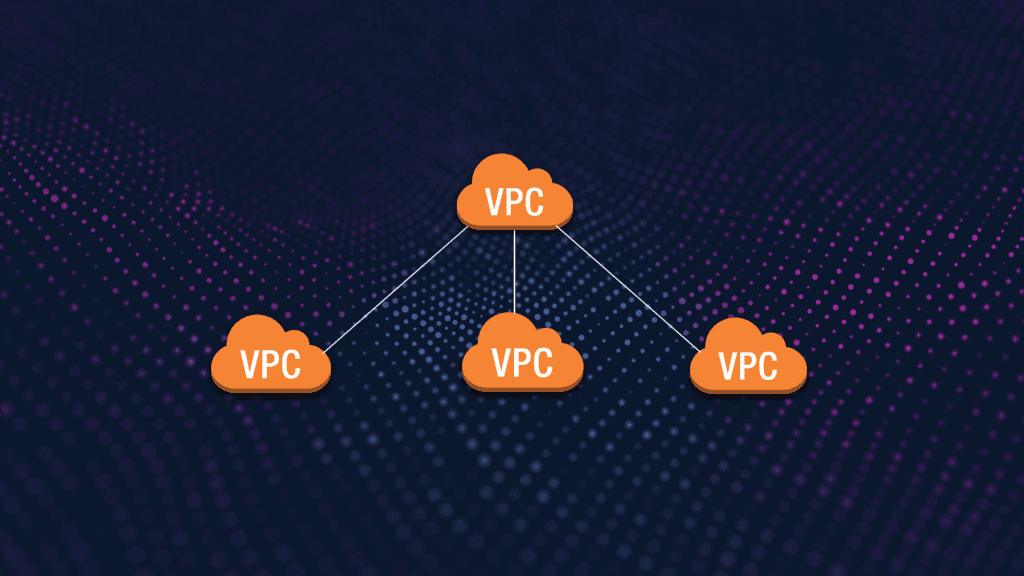Are you exploring AWS RemoteIoT VPC pricing and wondering how it can enhance your IoT infrastructure? As businesses increasingly adopt cloud-based solutions for IoT deployments, understanding the associated costs is crucial. AWS RemoteIoT VPC offers a secure and scalable environment to connect devices and manage data flows efficiently. However, navigating the pricing structure can be challenging without a clear understanding of its components and billing mechanisms. In this article, we will delve into the intricacies of AWS RemoteIoT VPC price, breaking it down into manageable segments that cater to your specific needs. Whether you're a startup or an enterprise, knowing how to optimize costs while maximizing performance is key to unlocking the full potential of your IoT ecosystem.
AWS RemoteIoT VPC price is not just about the cost of hosting; it encompasses a range of services that contribute to the overall expense. From data transfer charges to compute resources and storage, each element plays a vital role in shaping the final bill. Moreover, AWS provides flexible pricing models that allow users to tailor their solutions according to budgetary constraints. By leveraging these models, businesses can achieve cost efficiency without compromising on functionality or security. In the following sections, we will explore these aspects in detail, helping you make informed decisions about your IoT infrastructure investments.
As the demand for IoT solutions continues to rise, so does the importance of understanding AWS RemoteIoT VPC price. This article will provide a comprehensive overview of the pricing structure, highlight key considerations, and offer practical tips to manage costs effectively. Whether you're new to AWS or an experienced user looking to refine your IoT strategy, this guide will equip you with the knowledge needed to navigate the complexities of AWS RemoteIoT VPC pricing. Let's dive in and uncover the secrets behind optimizing your IoT networking costs.
Read also:How To Master Kohlscomactivate The Ultimate Guide
Table of Contents
- What Is AWS RemoteIoT VPC Price?
- Key Components of AWS RemoteIoT VPC Pricing
- How Does AWS RemoteIoT VPC Price Compare to Other IoT Solutions?
- How Can You Optimize AWS RemoteIoT VPC Price?
- Understanding AWS RemoteIoT VPC Billing Models
- Exploring Real-World Use Cases for AWS RemoteIoT VPC
- What Does the Future Hold for AWS RemoteIoT VPC Price?
- Frequently Asked Questions
- Conclusion
What Is AWS RemoteIoT VPC Price?
AWS RemoteIoT VPC price refers to the cost associated with using Amazon Web Services' (AWS) RemoteIoT Virtual Private Cloud (VPC) solution. This service enables organizations to create isolated virtual networks within the AWS cloud, specifically designed for IoT applications. By leveraging AWS RemoteIoT VPC, businesses can securely connect IoT devices, manage data flows, and ensure compliance with industry standards.
The pricing structure for AWS RemoteIoT VPC is multifaceted, incorporating various elements such as data transfer, compute resources, and storage. Each of these components contributes to the overall cost, making it essential to understand how they interact and impact the final bill. For instance, data transfer charges vary depending on the amount of data transmitted between regions or outside the AWS network. Similarly, compute resources are billed based on the type and duration of instances used, while storage costs depend on the volume and type of storage selected.
In addition to these core components, AWS RemoteIoT VPC price also includes charges for additional services such as database management, analytics, and security features. These optional services enhance the functionality of the solution but come at an additional cost. Therefore, it's crucial to evaluate your specific requirements and choose the services that align with your business objectives to avoid unnecessary expenses.
Key Components of AWS RemoteIoT VPC Pricing
To better understand AWS RemoteIoT VPC price, let's break down its key components:
- Data Transfer: Charges for transferring data between regions or outside the AWS network.
- Compute Resources: Costs associated with using EC2 instances or other compute services for processing IoT data.
- Storage: Fees for storing data in services like Amazon S3, Amazon EBS, or Amazon Glacier.
- Database Management: Expenses related to using AWS database services for managing IoT data.
- Analytics: Costs for leveraging AWS analytics tools to gain insights from IoT data.
- Security Features: Charges for implementing security measures such as encryption, firewalls, and access controls.
Each of these components plays a critical role in shaping the overall AWS RemoteIoT VPC price. By carefully evaluating your needs and selecting the appropriate services, you can optimize costs while ensuring your IoT infrastructure meets your business requirements.
How Does AWS RemoteIoT VPC Price Compare to Other IoT Solutions?
When considering AWS RemoteIoT VPC price, it's important to compare it with other IoT solutions available in the market. While AWS offers a robust and scalable platform, competitors such as Microsoft Azure IoT and Google Cloud IoT also provide viable alternatives. Each platform has its own pricing structure and features, making it essential to evaluate them based on your specific needs.
Read also:Prototype Psychology Definition Unlocking The Power Of Mental Models
One of the primary advantages of AWS RemoteIoT VPC price is its flexibility. AWS provides a pay-as-you-go model, allowing users to scale resources up or down as needed. This flexibility is particularly beneficial for businesses with fluctuating workloads or those looking to test new IoT applications without significant upfront investment. In contrast, some competitors may offer fixed pricing plans that can be less cost-effective for certain use cases.
Another factor to consider is the breadth of services offered by AWS. With a wide range of tools and features, AWS RemoteIoT VPC can cater to diverse IoT requirements, from simple device connectivity to complex analytics and machine learning applications. While other platforms may offer similar capabilities, the depth and integration of AWS services often provide a more comprehensive solution. However, it's essential to weigh these advantages against the associated costs to ensure you're getting the best value for your investment.
How Can You Optimize AWS RemoteIoT VPC Price?
Optimizing AWS RemoteIoT VPC price involves a combination of strategic planning and operational efficiency. Here are some practical tips to help you manage costs effectively:
- Right-Sizing Resources: Ensure you're using the appropriate instance types and sizes for your workloads. Over-provisioning can lead to unnecessary expenses, while under-provisioning may impact performance.
- Leveraging Reserved Instances: Consider purchasing reserved instances for predictable workloads to take advantage of discounted rates.
- Utilizing Spot Instances: For non-critical tasks, spot instances can provide significant cost savings by utilizing unused AWS capacity at a lower price.
- Implementing Auto Scaling: Use auto-scaling to dynamically adjust resources based on demand, ensuring you only pay for what you need.
- Monitoring Usage: Regularly review your usage patterns and adjust your configuration as needed to avoid unexpected charges.
By following these strategies, you can effectively manage AWS RemoteIoT VPC price and ensure your IoT infrastructure remains cost-efficient and aligned with your business goals.
Understanding AWS RemoteIoT VPC Billing Models
AWS RemoteIoT VPC price is influenced by the billing models available. AWS offers several pricing models, including on-demand, reserved, and spot pricing, each catering to different use cases and budgetary constraints. Understanding these models is crucial for optimizing costs and ensuring financial predictability.
On-demand pricing allows users to pay for resources as they use them, making it ideal for unpredictable or short-term workloads. Reserved pricing, on the other hand, offers significant discounts for committed usage over a one or three-year period, making it suitable for stable and predictable workloads. Spot pricing provides the lowest cost option by utilizing unused AWS capacity, but it comes with the risk of interruptions if demand increases.
By selecting the appropriate billing model based on your specific needs, you can achieve cost efficiency while maintaining flexibility and scalability in your IoT infrastructure.
Exploring Real-World Use Cases for AWS RemoteIoT VPC
To better understand the value of AWS RemoteIoT VPC price, let's examine some real-world use cases:
- Smart Cities: Municipalities use AWS RemoteIoT VPC to manage traffic systems, environmental sensors, and public safety applications, improving urban living conditions.
- Industrial IoT: Manufacturers leverage AWS RemoteIoT VPC to monitor equipment performance, optimize production processes, and reduce downtime.
- Healthcare: Healthcare providers utilize AWS RemoteIoT VPC to connect medical devices, track patient vitals, and enhance care delivery.
These examples demonstrate the versatility and scalability of AWS RemoteIoT VPC, making it a valuable solution for businesses across various industries.
What Does the Future Hold for AWS RemoteIoT VPC Price?
As technology continues to evolve, so does the landscape of AWS RemoteIoT VPC price. AWS is constantly innovating, introducing new services and features to enhance the functionality of its IoT solutions. These advancements are likely to impact pricing structures, offering users more options to tailor their solutions to specific needs.
In addition to technological advancements, market dynamics and competition will also influence AWS RemoteIoT VPC price. As more players enter the IoT space, AWS may adjust its pricing strategies to remain competitive and attract new customers. Staying informed about these trends will help businesses anticipate changes and make proactive decisions about their IoT investments.
Frequently Asked Questions
What factors affect AWS RemoteIoT VPC price?
AWS RemoteIoT VPC price is influenced by several factors, including data transfer, compute resources, storage, database management, analytics, and security features. Each of these components contributes to the overall cost, making it essential to evaluate your specific requirements and choose the appropriate services to optimize costs.
How can I estimate my AWS RemoteIoT VPC price?
AWS provides a pricing calculator that allows users to estimate their costs based on their specific configuration and usage patterns. By inputting details such as instance types, storage requirements, and data transfer needs, you can generate an estimated bill and plan your budget accordingly.
Are there any discounts available for AWS RemoteIoT VPC price?
Yes, AWS offers various discounts for committed usage, including reserved instances and volume pricing. Additionally, spot instances provide a cost-effective option for non-critical tasks by utilizing unused AWS capacity at a lower price.
Conclusion
In conclusion, understanding AWS RemoteIoT VPC price is essential for businesses looking to leverage the power of IoT in their operations. By breaking down the pricing structure, evaluating key components, and exploring optimization strategies, you can make informed decisions about your IoT infrastructure investments. As the IoT landscape continues to evolve, staying ahead of pricing trends and technological advancements will ensure your business remains competitive and cost-efficient.
Whether you're a startup or an enterprise, AWS RemoteIoT VPC offers a scalable and secure solution to meet your IoT needs. By carefully planning and managing your resources, you can unlock the full potential of your IoT ecosystem while keeping costs under control. Embrace the future of IoT with confidence and let AWS RemoteIoT VPC be your partner in success.


